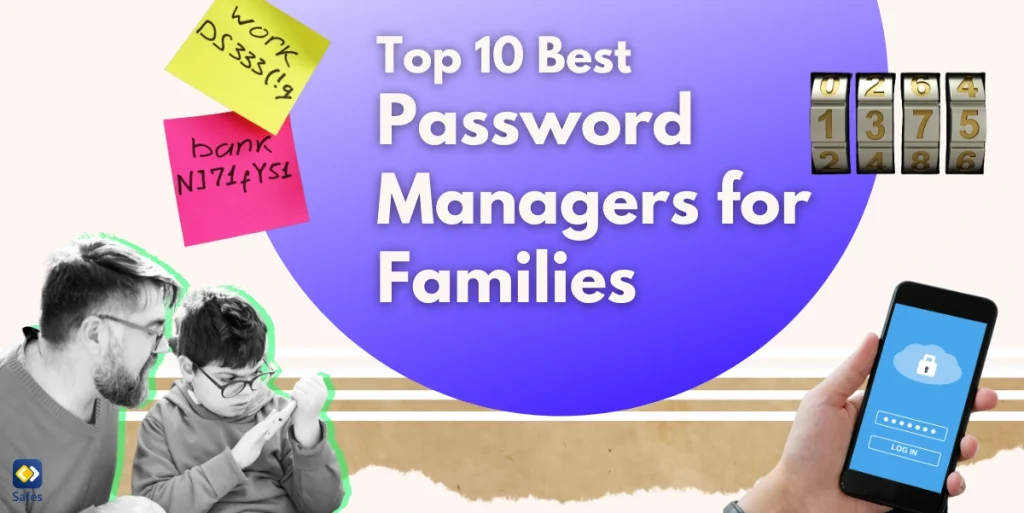Communication skills in children refer to their ability to connect with others via verbal or nonverbal exchange of thoughts and feelings. But what is the importance of communication skills for children?
Download and Start Your Free Trial of the Safes Parental Control App
Effective communication skills play a significant role in children’s personal, social, and academic development. As they grow older, they need to interact more with their peers and family. When children can express themselves clearly, it means that they are equipped with good communication skills.
Parents can foster this skill in children by using some practical methods, namely talking regularly with children, listening to them actively, and improving their public speaking skills.
Continue reading this article to learn more about the significance of communication skills in children, along with recommendations for teaching positive communication skills to children and teens.
The Foundation of Effective Communication
As previously mentioned, children’s communication abilities play a fundamental role in shaping various aspects of their lives. Here, we want to show why it is so important for children:
- Academic success: Children with strong communication abilities are more active in class; ask more questions and understand the material better which leads to better academic performance.
- Social interaction: The basis of social interaction is communication, children who are good communicators can make more friends and they can navigate social situations better.
- Confidence building: When children can interact effectively, their self-confidence will improve. They are more likely to engage in various activities, share their ideas, and take leadership responsibilities.
- Cultural Awareness: By having good communication skills, children are willing to interact with people from different cultures and it improves their cultural awareness.

Nurturing Effective Communication Skills
We have gathered some age-appropriate communication strategies for each component of communication. These strategies can promote effective communication skills in children and teach them different means of communication.
Listening Skills
A vital component of communication is active listening because it promotes truthfulness in communication. By demonstrating that you are listening to your conversation partner, you give them the impression that their opinions matter to you. Parents can foster active listening habits in children by:
- Eliminating the distractions when you and your child are talking together.
- Reading a story together and asking children follow-up questions.
- Playing listening games with children.
Speaking and Expressing Themselves Clearly
Clarity and articulation are two essential factors in speaking as they contribute to effective communication in children. When children can produce words, sounds, and sentences clearly, others can understand them better. As a parent, you can encourage your children to express themselves better by dedicating a specific time to discussions, asking them open-ended questions, and listening to them with patience. These methods can be beneficial communication activities for teens too.
Vocabulary and Language Development
The more vocabulary the children know, the better communication skills they have. They can express themselves better as well as engage in meaningful interactions. In order to build your child’s vocabulary, you can:
- Play word games with children that are fun and beneficial.
- Read books together, avid readers have a wider vocabulary range.
- Introduce a new word each day and encourage them to use it.
- Install age-appropriate educational apps for language development.
Nonverbal Communication and Digital Etiquette
Body language and nonverbal clues are significant in children’s communication. Often conveying messages even more effectively than just using words. Digital communication, including texting, is another kind of nonverbal communication that is common among children.
Managing Emotions and Conflict Resolution
A crucial component of children’s effective communication is emotional intelligence. It is necessary for establishing and maintaining positive interactions as well as overcoming a variety of social and emotional challenges.
Moreover, emotional intelligence enables children to step into others’ shoes and feel what they go through. This sense of empathy fosters a greater understanding of other people’s viewpoints and feelings.
Encouraging Public Speaking and Presentation Skills
Children who speak in front of an audience can express themselves more confidently, engage with others effectively, and perform better social skills. Parents can foster public speaking in children by enrolling their children in public speaking clubs or creating friendly speaking challenges within the family for them.

Digital Literacy and Online Safety
With the popularity of the internet, most children tend to communicate through screens and devices instead of using verbal communication. Because most children are growing up in a connected world, they are active internet users. Sometimes overusing the internet and chat applications can threaten children’s online safety. So, parents should promote children’s online safety and digital literacy.
Parents can use several methods such as disusing online risks or being a positive role model for children to protect them from online risks. Moreover, they can use the default parental controls on children’s devices. Here are our resource pages that you can check to get more information:
- Android parental controls
- iPhone parental controls
- Windows parental controls
- MacBook parental controls
Managing screen time, monitoring online activities, and setting limitations for applications and platforms can be accomplished by installing a third-party parental control app like Safes. You can download this app for free on iOS and Android.
Consider starting a 14-day free trial of Safes to explore its full capabilities. It’s a hassle-free way to see how Safes can enhance your child’s digital safety, no credit card required.
Conclusion
Overall, as effective communication skills are essential for children’s well-being and development, we recommended some methods to parents for how to teach communication skills to their children. Practicing active listening, encouraging children to speak in public, and developing their vocabulary range are some of the mentioned tips.
Your Child’s Online Safety Starts Here
Every parent today needs a solution to manage screen time and keep their child safe online.
Without the right tools, digital risks and excessive screen time can impact children's well-being. Safes helps parents set healthy boundaries, monitor activity, and protect kids from online dangers—all with an easy-to-use app.
Take control of your child’s digital world. Learn more about Safes or download the app to start your free trial today!




